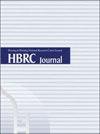Branding heritage in multi-cultural societies, with special references to preservation discourses
Q2 Engineering
引用次数: 0
Abstract
Heritage is the platform of intangible attributes embedded within the physical urban values; it is the overlapping between urban forms and social history. Heritage can be a brand value proposition that creates a unique base of strong relationships between urban settings and users. The research is focusing on the idea of heritage preservation from a different perspective, adopting branding techniques and mechanisms to overlap the two disciplines in a study framework. Branding heritage re-introduces heritage values from the marketing perspective, in which the research reflects the idea of the place attachment and refreshes memories from the economic dimension. The research proposes a structural framework that accommodates the literature domains of heritage preservation as tangible elements, patterns, geometry … etc. and intangible values as spiritual, sense of place … etc. mapped with the branding approaches. The aim of this research is to trace the branding heritage tactics and examine the approach. The purpose is to preserve heritage from deterioration and use its values as economic assets. The research intends to validate the importance of marketing experience in branding heritage process, using the symbols of tangible and intangible meanings and its significance. The research anticipates studying marketing the heritage within multi-cultural societies, in terms of contributing the heritage of some urban setting within the heritage of others. The proposed structural framework reflects the mechanism of branding heritage. Finally, the research concludes its findings by offering interpretations of re-reading the users reflections and reviews to the concept of branding heritage upon an existing project setting.多元文化社会中的品牌遗产,特别涉及保护话语
遗产是嵌入城市物质价值的非物质属性的平台;它是城市形态与社会历史的重叠。遗产可以成为一种品牌价值主张,在城市环境和用户之间建立牢固关系的独特基础。该研究从不同的角度关注遗产保护的理念,采用品牌化技术和机制将两个学科重叠在一个研究框架中。品牌传承从市场营销的角度重新引入遗产价值,研究体现了地方依恋的理念,从经济维度刷新记忆。本研究提出了一个结构框架,该框架将文化遗产保护的有形元素、图案、几何等文学领域和无形价值(精神、地方感等)与品牌方法相结合。本研究的目的是追溯品牌传承策略和检验方法。其目的是保护遗产,防止其变质,并将其价值作为经济资产加以利用。本研究旨在通过有形和无形意义的符号及其意义来验证营销经验在品牌传承过程中的重要性。该研究预计将在多元文化社会中研究遗产营销,在其他文化遗产中贡献一些城市环境的遗产。提出的结构框架反映了品牌传承的机制。最后,该研究通过重新阅读用户对现有项目背景下品牌遗产概念的反思和评论来总结其研究结果。
本文章由计算机程序翻译,如有差异,请以英文原文为准。
求助全文
约1分钟内获得全文
求助全文

 求助内容:
求助内容: 应助结果提醒方式:
应助结果提醒方式:


